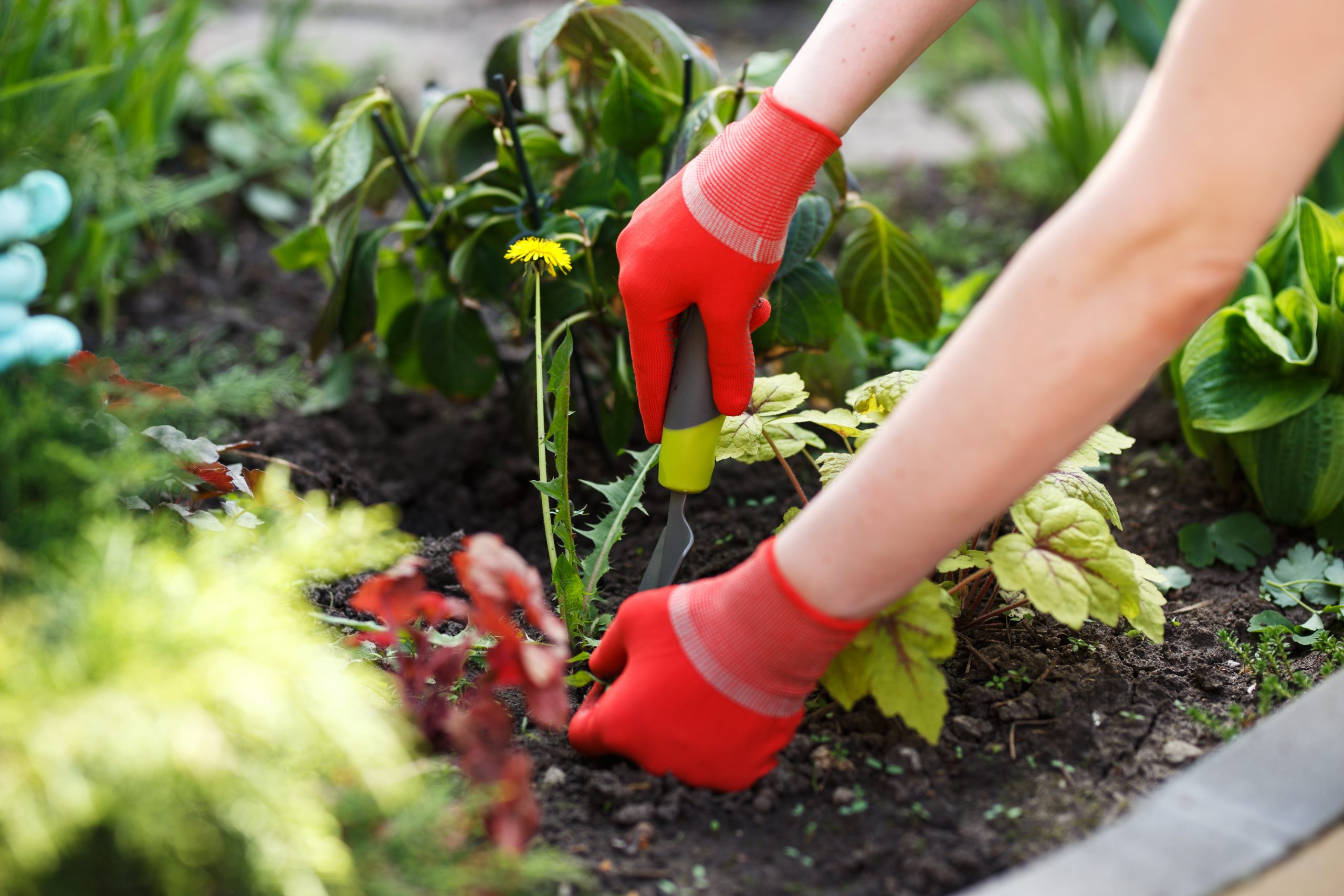Weeds pose problems for your garden beds and lawns year-round in Vancouver, Camas and Washougal, Washington. Controlling weeds in these areas can be frustrating. That’s why many people turn to hazardous and unhealthy chemicals for a solution in solving their weed infestations. However, the same results can be achieved through the use of organic weed control methods, without the complications that come with using chemical solutions. This blog will discuss several options for DIY and homemade organic methods of controlling the growth and spread of weeds on your property in the Pacific Northwest without the use of unnecessary and harmful chemicals.
Pulling
A great place to start with tackling weeds in your yard is the good, old-fashioned hand-pulling method. With a little bit of elbow grease, you can have your beds weed free within hours, depending on the level of weed infestation. The method is simple, yet effective; simply pull up the weed by the root. It is best to pull weeds when the soil is wet because it makes it easier to remove the entire root system of the plant. When pulling weeds with tap roots, be sure that you pull up the entire taproot, otherwise, the plant will quickly regrow.
Boiling Water
Pouring boiling water directly onto undesirable plants works well at killing most weeds in just one application. Although, with some plants, especially those with tap roots, it will most likely need more than one application. When using this method for weed control, bring a pot of water to a roaring boil and pour it directly on the leaves and stems of the plant you wish to remove. Be careful not to pour the boiling water on any plants you wish to keep, as this method will kill any plant that the water comes into contact with. However, if your goal is to kill all the plants growing in a certain area so that you can replant the area with new foliage, then this method will work nicely. This method also works great for removing plants in gravel, and in driveway or sidewalk cracks.
Vinegar
Using white vinegar to control weed growth is also a viable option. White vinegar is rated by its acetic acid, which can range from about 5% (usually the level sold in grocery stores) to 20% (industrial strength). Be especially careful when handling white vinegar that contains a higher acetic acid level, because it can be harmful to eyes, skin and even lungs. Vinegar can be put into a spray bottle and applied directly to the leaves and stems of the plants you would like removed. Be conscious of the overspray and avoid spraying desirable plants or saturating the soil because, like the boiled water method, vinegar doesn’t discriminate against desirable plants (i.e. it will kill all plants it comes into contact with).
Salt
Common table salt can be used to control weeds as well. However, it is important to note that you should be cautious of how you apply and use salt as a weed control method. Adding salt to soil can make it so nothing will grow in that area for long periods of time. So instead of dumping salt into your soil, follow this method. Mix 1 part salt to 5 parts water, add in a small amount of dish soap and pour the concoction into a spray bottle. The dish soap allows the salt and water to adhere to the undesirable plants and helps to keep the salt out of the soil. Before you apply the salt water to the weeds, tie back any plants that you would like to keep, and spray the leaves of the weeds. Do not saturate the soil. More than one application may be necessary to take out certain weeds.
Cornmeal Gluten
Cornmeal is another natural alternative to weed control in your garden beds. Cornmeal gluten hinders weed seeds from germinating and, therefore, growing in the first place. However, use caution when applying cornmeal because it will halt the germination of all seeds, so it may affect seeds of plants that you would like to keep in your beds. However, cornmeal should not affect plants that have already begun to grow and that is why many people use it as a preemergent in their lawns. Usually, there is instructions on the packaging for how and when to apply cornmeal on your beds and lawn. Be sure to apply it before weeds have begun to grow, otherwise, it will have no effect. Also, if you are applying cornmeal to vegetable beds or flowerbeds, ensure you do so after these seeds have begun to grow, otherwise, it will hinder their growth as well.
Borax
You can also use the naturally occurring, household cleaning product, Borax, to remove and control weeds in your yard. For this method, dissolve 10 ounces of Borax into 5 ounces of hot water. After the Borax is dissolved, thoroughly mix the solution with 2 gallons of water. Pour the concoction into a garden sprayer or spray bottle and apply directly to the unwanted plants. Again, avoid saturating the soil and over-spraying onto desirable plants. Furthermore, avoid getting the solution on the skin.
Weed Barrier and Mulch
Directly after treating weeds with any of the solutions discussed here, it is a great idea to lay down landscape fabric to act as a weed blocker in your beds. After the landscape fabric has been laid, cover it with a 2-4 inch thick layer of mulch. Mulching has many benefits and perhaps one of the best is that it prevents weeds from germinating and will greatly cut down on the number of weeds that regrow. Applying mulch without the weed barrier is an option as well, however, the barrier will keep your bed weed free for longer periods of time.
Controlling weeds can be a frustrating endeavor, but by following these solutions, you can naturally and organically get rid of all your unwanted plants. You will need to be diligent about any method of weed control that you use, and you may, therefore, choose to hire a landscape maintenance company, like Urban Eden, to take care of these problems for you. For more information on how Urban Eden Landscaping can help in your garden, click here. For a free estimate, contact Urban Eden today, by using the Contact Us form or the Free Estimate form or by simply giving us a call!

